 Overview
Overview
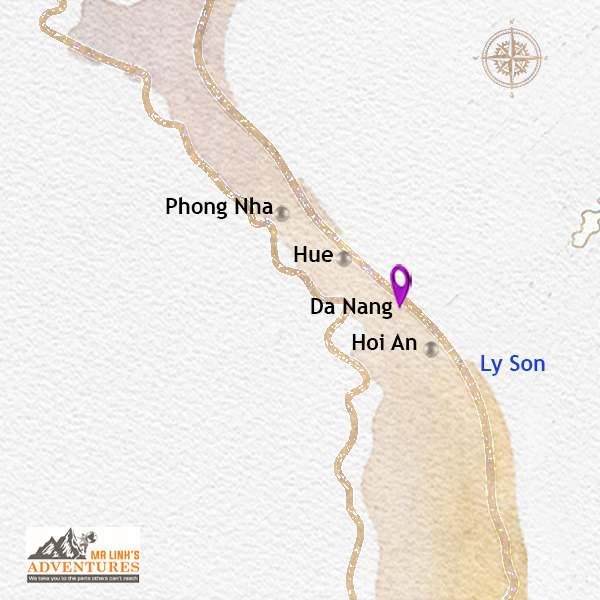
Long overshadowed by its more famous neighbors, Hoi An and Hue,
Da Nang, a coastal city in central Vietnam, is finally coming into its own. As the fifth largest city in the country, it offers modern infrastructure rivaling that of Hanoi and Saigon, all in a relaxed seaside atmosphere.
Located on the central coast of Vietnam, Da Nang is a dynamic and modern city that offers a perfect blend of natural beauty, rich culture, and thrilling adventure. With its white sandy beaches, majestic mountains, and delicious cuisine, Da Nang is an ideal destination for travelers seeking discovery and excitement.
 Top Attractions
Top Attractions
Da Nang, the gateway to adventure in Vietnam, is a must-see destination for any traveler seeking discovery and excitement. With its white sandy beaches, majestic mountains, and delicious cuisine, Da Nang offers a perfect blend of natural beauty, rich culture, and thrilling adventure.
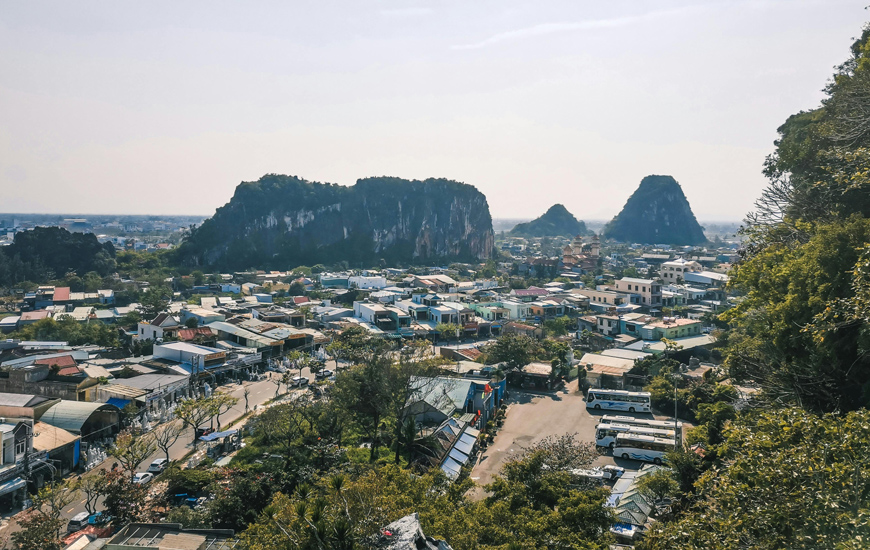 Mystic Marble Mountain, Da Nang's Natural Wonder
Mystic Marble Mountain, Da Nang's Natural WonderMarble Mountain
Explore these five marble and limestone hills, which house sacred caves, historic pagodas, and panoramic views of the city.
Dragon Bridge
Admire this iconic bridge spanning the Han River, which spits fire and water on weekends in a spectacular show.
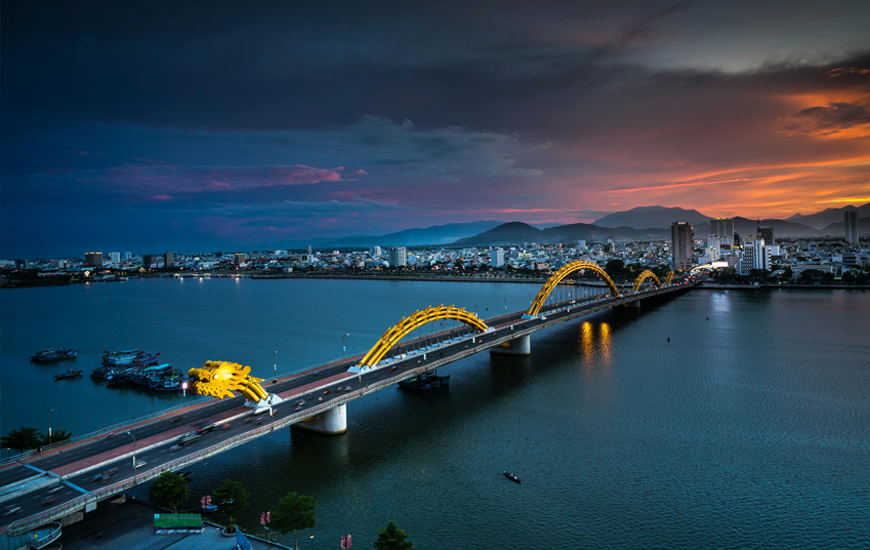 Danang's Dragon Bridge spits fire and water on weekends
Danang's Dragon Bridge spits fire and water on weekendsMy Khe Beach
Da Nang's long white sandy beaches are a major draw. My Khe Beach, near the city center, is popular for its morning tai-chi sessions. Later in the day, it becomes a tourist haven, with palm umbrellas and woven boats. Other beaches, like Lang Van to the north, offer more secluded and wild settings, accessible by trails.
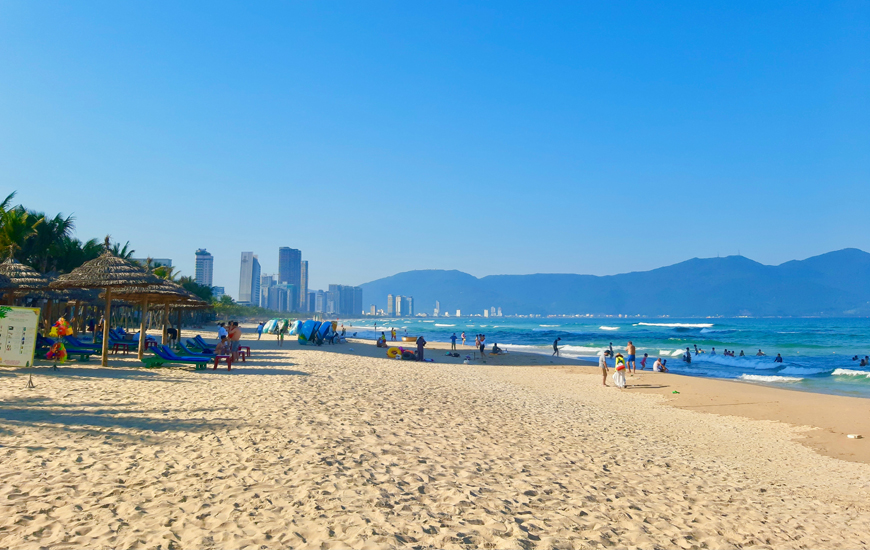 Golden Sands and Gentle Waves, My Khe Beach
Golden Sands and Gentle Waves, My Khe BeachThanh Khe Fishing Village
Immerse yourself in the authentic atmosphere of this traditional fishing village, where you can savor fresh seafood and observe the daily lives of local fishermen. Thanh Khe is also famous for its traditional Fishermen's Festival, where locals pray for a good harvest at sea. In addition to its maritime ambiance, Thanh Khe is close to other tourist attractions, including the Tam Thanh Community Art Village, about an hour south.
 See & Do
See & Do
Da Nang is a city full of activities for all tastes. Whether you're passionate about nature, history, or thrills, you'll find something to enjoy in Da Nang.
Hai Van Pass
The Hai Van Pass, near Da Nang, is a must-visit for nature lovers. This scenic route, once difficult to access, offers spectacular views of the mountains, forests, and coastline. At the top of the pass, 496 meters above sea level, a unique viewpoint allows you to admire the surrounding landscapes. A small fortress, bearing the traces of war, testifies to the region's tumultuous past.
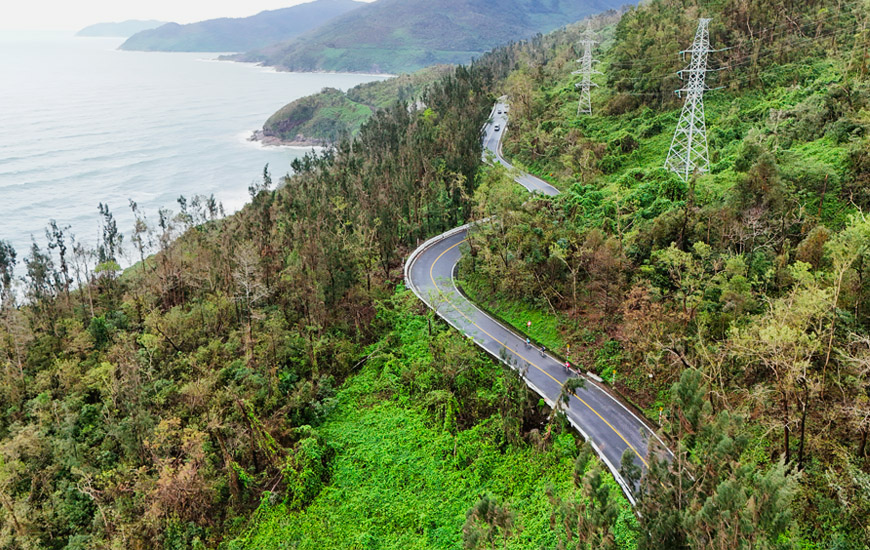 Hai Van Pass, The Legendary Coastal Road of Da Nang - Mr Linh's Adventures
Hai Van Pass, The Legendary Coastal Road of Da Nang - Mr Linh's AdventuresSon Tra Peninsula
Facing the Hai Van Pass, across Da Nang Bay, lies the Son Tra Peninsula. This preserved region, covered in lush forests and bathed in crystal-clear waters, offers a refuge away from urban hustle. The fine sandy beaches invite relaxation, while the forests are home to diverse flora and fauna, including red-shanked douc langurs. The underwater reefs harbor colorful coral formations.
Tuy Loan Village
A few kilometers from the modernity of Da Nang, Tuy Loan Village offers a glimpse into authentic and traditional Vietnam. Far from bright lights and hotel complexes, this rural haven captivates with its verdant landscapes, winding rivers, and ancient temples.
Tuy Loan is best known for its traditional craft: rice paper production. An ancestral know-how passed down through generations, it is a source of pride for the locals. What makes Tuy Loan's rice paper unique? A secret blend of spices and condiments, as well as an original drying method using charcoal, which preserves the paper from moisture and gives it a distinct texture. Tuy Loan is also the birthplace of mi quang, a local culinary specialty made from rice noodles. A delicious dish, prepared with fresh local ingredients, that will delight your taste buds.
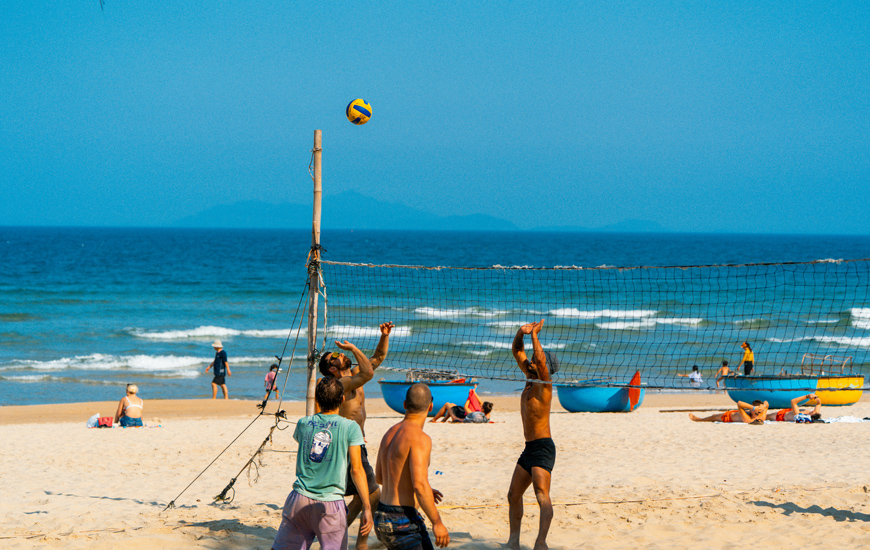 Spike into the Sunset, Beach Volleyball at My Khe
Spike into the Sunset, Beach Volleyball at My KheWater sports
Try surfing, kayaking, or scuba diving in the warm waters of the South China Sea.
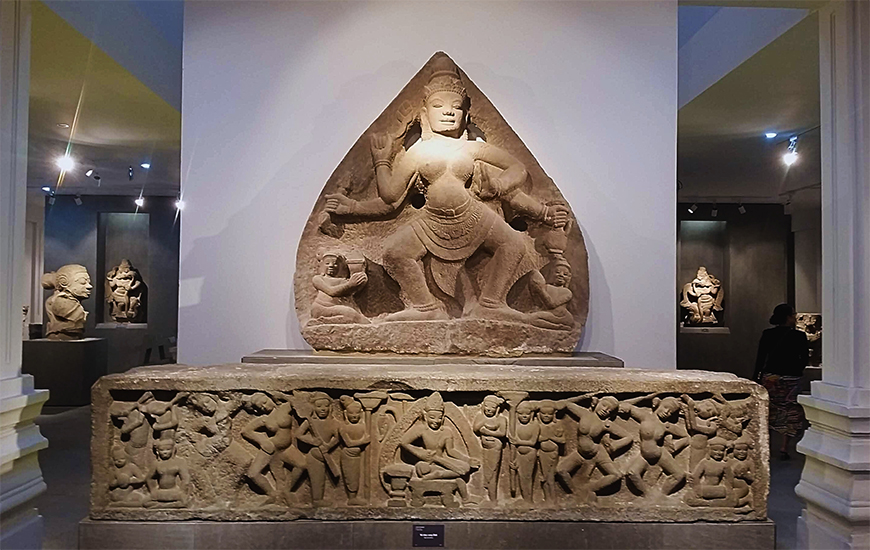 Museum of Cham sculpture - Mr Linh's Adventures Team
Museum of Cham sculpture - Mr Linh's Adventures TeamCultural visits
Discover the richness of Da Nang's history and culture by visiting the Cham Museum and the Linh Ung Pagoda, also known as Lady Buddha.
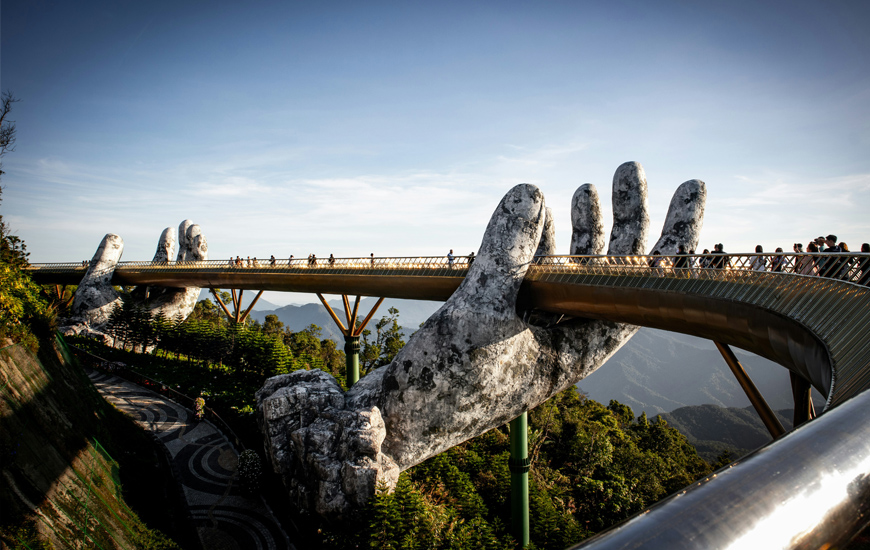 The famous Golden Bridge THE must-see in Bana Hill
The famous Golden Bridge THE must-see in Bana HillBa Na Hill
Located at an altitude of 1,487 meters near Da Nang, the Ba Na Hills offer a magical getaway. The ascent by cable car, the longest in the world, is an unforgettable experience, offering spectacular views of the lush forest and clouds. Once at the top, a world of wonders awaits you: magnificent temples and pagodas, a picturesque French village, well-kept gardens, modern attractions and the now famous golden bridge.
 Go Green
Go Green
For travelers seeking adventure and off-the-beaten-path discoveries, Mr. Linh's Adventure offers unique tours in the Da Nang region.
 Heritage
Heritage
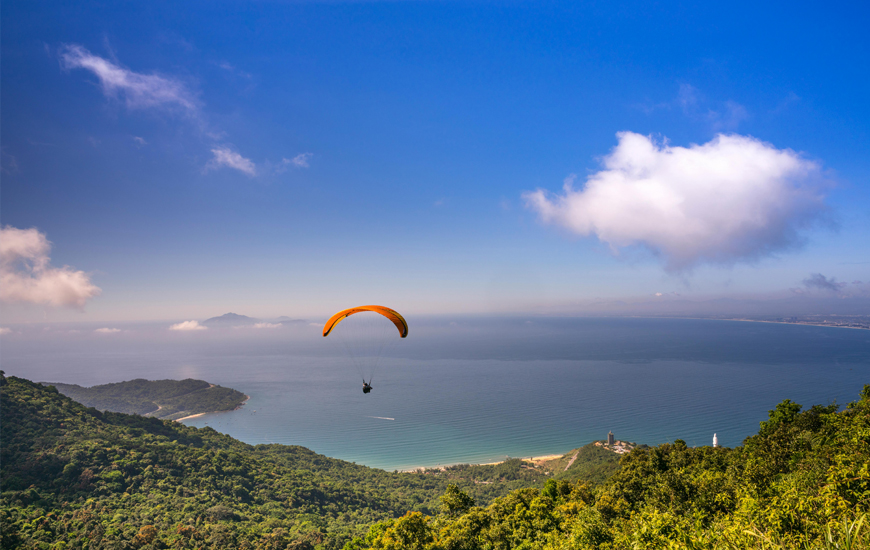 Soaring Above Son Tra, Paragliding Over Da Nang's Breathtaking Peninsula
Soaring Above Son Tra, Paragliding Over Da Nang's Breathtaking Peninsula
Da Nang has not always been the relaxed seaside destination it is known as today. Its history has been marked by trials and upheavals, especially during the wars that ravaged Vietnam.
Founded by the Cham people in 192 AD, the city preserves temples and remnants of this kingdom, bearing witness to a rich history. The Cham kingdom was overthrown by the Vietnamese people in the 15th century, marking a turning point in the region's history. In the 19th century, King Minh Mang, eager to counter European influence, chose Da Nang as the only commercial port open to Western ships. This decision propelled Da Nang into the commercial spotlight, even overshadowing the port of Hoi An for a time.
From 1858, Da Nang (then called Tourane by the French) became a major point of contention between France and Vietnam. In 1888, King Dong Khanh ceded the city to France, which developed and modernized it.
After Vietnam's independence in 1945, Tourane was briefly renamed Thai Phien City before reverting to its name of Da Nang.
The Vietnam War marked a new difficult period. In 1965, the arrival of the Americans transformed Da Nang into a significant military base, leading to destruction and a population exodus.
It was only in 1975, with the liberation of Da Nang, that the city could begin its reconstruction and development. Despite the scars of war, Da Nang has experienced a remarkable rebirth. Massive investments in tourism have transformed the city, with the construction of luxury hotels and beach resorts. Symbolizing this transformation, the impressive Dragon Bridge spans the Han River. This 666-meter structure, adorned with an illuminated dragon at night, spits fire and water, celebrating Vietnam's liberation.
Da Nang's revival has attracted numerous visitors, enticed by the city's natural beauty and relaxed atmosphere.
Historic sites and places of worship: Visit the Cham Museum, home to an exceptional collection of Cham civilization sculptures, or the Linh Ung Pagoda, which also offers breathtaking views of the city.
Lady Buddha
Standing at 67 meters, Lady Buddha dominates the landscape, offering stunning views of the city, the South China Sea, and the surrounding mountains. Her immaculate white color contrasts with the azure sky and lush greenery of the peninsula, creating a striking sight. Nestled in the heart of the Linh Ung Pagoda, the Lady Buddha statue is more than just a tourist attraction. It is an important place of worship for local Buddhists, who come to pray and meditate. The peaceful and serene atmosphere invites contemplation and reflection.
The Lady Buddha statue has become a symbol of Da Nang, attracting visitors from around the world. Its majestic presence and aura of serenity make it a must-visit for those wishing to explore the region's spiritual and cultural richness.
Cao Dai Temple
From the outside, the Cao Dai Temple impresses with its bright yellow facade, adorned with colorful details and the divine eye, a symbol of the Cao Dai religion. The interior is equally spectacular, with vibrant colors, sparkling gilding, and numerous religious iconographies. The Cao Dai Temple is not just an architectural gem; it is primarily an active place of worship, where daily services are held. It is estimated to welcome nearly 50,000 Cao Dai faithful, a syncretic religion born in Vietnam in the early 20th century.
The Cao Dai Temple resides on Hai Phong Street, a central thoroughfare in Da Nang. This street is significant as it embodies the wartime North-South twinning movement, a period of solidarity between Vietnamese provinces, with strong ties forged between Da Nang and Hai Phong.
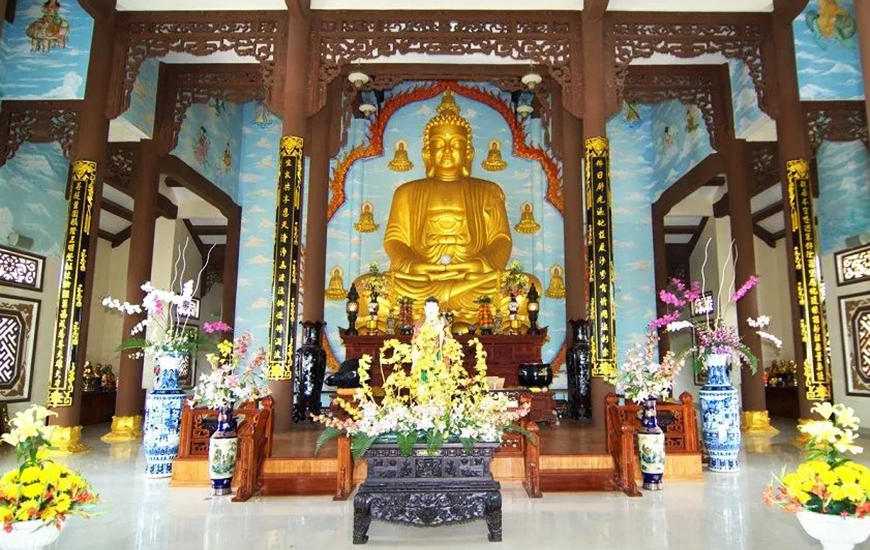 Chua Phap Lam, Danang
Chua Phap Lam, DanangPhap Lam Pagoda
A haven of peace in the heart of Da Nang, this Buddhist place of worship never fails to impress. As soon as you enter, you will be enveloped in an atmosphere of calm and tranquility. The pagoda is nestled in a lush garden, where carefully maintained potted trees create a soothing visual harmony. In the center of the courtyard, three imposing statues welcome you: a seated Buddha statue, 1.1 meters high, accompanied by the goddess of mercy and the bodhisattva Dai The Chi. Inside the temple, a golden Buddha statue sparkles, adding a touch of splendor to this sacred place.
 Food & Drinks
Food & Drinks
 Da Nang, a seafood paradise - Mr Linh's Adventures
Da Nang, a seafood paradise - Mr Linh's Adventures
Da Nang, a coastal town in central Vietnam, celebrates the delights of the sea. A wide variety of seafood, such as shrimp, crab, squid, clams and snails is available. Local chefs, using diverse cooking methods and rich spices, produce an irresistible range of dishes, capturing the essence of the sea.
The most famous dish is My Quang, named after Quang Nam province. The thick rice noodles, often seasoned with turmeric for a rich yellow color, are topped with a mix of succulent meat and shrimp, fresh vegetables, peanuts, and rice crackers. Unlike other traditional noodle dishes, only a small amount of broth is served with the meal. The blend of flavors, textures, and colors in this dish harmoniously combine to create an interesting and tasty meal.
Savor Bun Cha Ca, a traditional fish noodle soup from Da Nang, appreciated for its refined taste and nutritious qualities. Fish cakes and fresh vegetables, cooked slowly, create a broth with sweet-salty notes.
Banh Trang Cuon Thit Heo is another variation of rice paper rolls, this time with pork as the main ingredient. Fresh and colorful ingredients are served on plastic plates, ready for the customer to create their own rolls with rice paper, pork, and vegetables. The sweetness of the pork and rice paper is beautifully complemented by the freshness and crunchiness of the vegetables.
 Directions
Directions
Location
Da Nang is located on the central coast of Vietnam, approximately 760 km south of Hanoi.
How to get there from Hanoi
You can reach Da Nang by plane, train, or bus from Hanoi. The price of a round-trip flight ticket from Hanoi to Da Nang varies between 50 and 150 USD, depending on the airline and the time of year.
Best season
The best time to visit Da Nang is from March to September when the weather is dry and sunny.
Come experience an unforgettable adventure in Da Nang, a city that will not fail to surprise and enchant you!